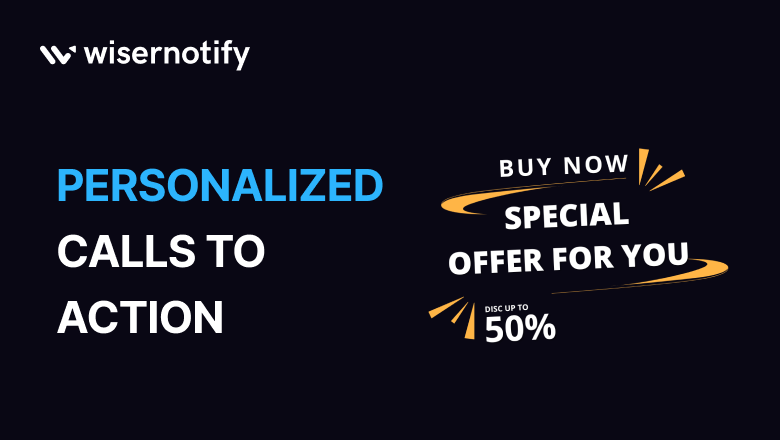How many times have you seen the content you enjoyed on one platform that has served you in a customized way on the other one?
For example, you were searching for a laptop on Google, and the laptop ads are shown on Facebook in a more personalized manner.
Or maybe you received an email that resonates with the same laptop you were looking for.
Your visitors want the same personalized experience on your website and CTA button as well. That’s where the personalized calls to action come in.
A personalized call to action is a tailored message designed to encourage users to take the next step. Rather than presenting a generic CTA to all users, personalized CTA buttons create a more engaging and effective experience for the customers.
In this article, we’ll explore the importance, impact, and examples of CTA and how to implement them in your marketing campaigns to drive more results.
Build trust & FOMO
Highlight real-time activities like reviews, sales & sign-ups.
Understanding the Impact of Personalized CTAs
Personalized calls to action are a powerful tool that is tailored to each individual’s preferences, interests and behaviors.
Instead of using a one-size-fits-all approach a personalized call to action serves as more effective at engaging and converting potential customers.
Personalized CTAs can also take into account several factors, such as location, time of the day, and even the device your customers are using to view your content.
That helps you craft a more tailored and relevant experience for each visitor, increasing the chances of conversions and taking the desired action.
Here are some ways Personalized calls to action can make a difference:
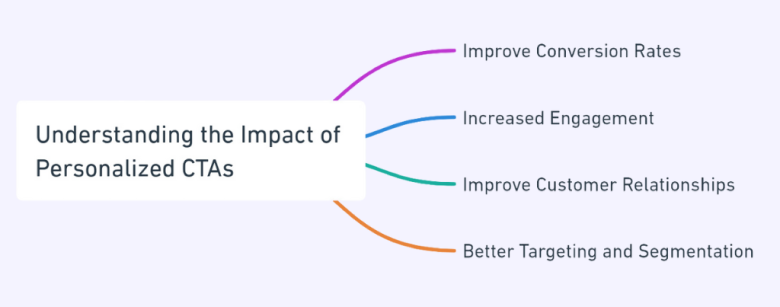
- Improve Conversion rates: Tailoring CTAs to users’ interests or funnel stage journeys can drive higher conversion rates.
- Increased Engagement: Personalized calls to action grab visitors’ attention by addressing their specific needs, preferences, or behaviors.
- Improve Customer Relationships: Personalized CTAs help businesses build stronger long-term relationships with customers and foster trust and loyalty over time.
- Better Targeting and Segmentation: Personalized calls to action help to segment the audience more effectively based on demographics, behaviors, or preferences. Matching the message as per the customer’s interest can result in driving conversions in marketing efforts.
Incorporating personalized CTAs into your marketing campaigns can bring numerous benefits, drive sales, and enhance customer experience and conversions.
How Personalized CTA Different From Generic
Personalized CTAs convert 42% more visitors into leads compared to generic CTAs. Here are some differences between Generic and Personalized CTAs.
Generic CTAs are the same for all users irrespective of individual preferences, funnel stage, and behaviors.
On the other hand, Personalized CTAs are more tailored based on data such as past interactions, browsing history, and purchases, making them more relevant and appealing.
Generic CTAs use generic languages and messages such as “Call Now,” “SignUp,” or “Buy Now” without addressing specific user interests.
Personalized CTAs use strong and actionable words that are relevant to the user, such as “Buy Now to available 20% off” or “Subscribe and get a special offer.”
Generic CTAs might have lower conversion rates as they appeal to broad audiences without any specific user interests; on the other hand, personalized calls to action target specific individual users and bring higher conversion rates and engagement.
Now that you know why Personalized calls to action are more effective, let’s discuss crafting effective personalized CTAs that stand out.
Let’s dive in!
Practical Tips for Crafting Effective Personalized CTAs
A well-crafted CTA can help boost conversions, encourage readers, and influence prospective customers to take action and achieve your business goals.
These personalized CTAs make all the difference in your marketing materials, web page, ad copy, blog posts, and email campaigns. They speak directly to your audiences who have shown interest in your products or services.
Here are a few tips to craft a personalized CTA.
1. Start with Strong Data Collection
Collecting and analyzing data can help craft effective CTAs relevant to the specific target audience.
It helps to track a wide range of user behavior, including demographics, browsing history, location, purchase history, and interactions with the website.
The data can be used to track users’ past interactions, purchase stages, product interests, and pages they have visited. It helps you create a targeted message and offers that resonates with your target and increases the chances of them taking action.
2. Use Action-Oriented Language
Use action-oriented words and strong words in your CTA that influence your audiences to take action.
Make sure that your CTA copy clearly communicates what the user gains after clicking the CTA button.
For example, “Download our ebook and boost your marketing efforts.”
3. Design for Visibility
Make sure your CTA stands out visually. Contrasting colors that contrast with the background, large and bold fonts to make it easy to read, surrounding the CTA with whitespace, and incorporating other elements can draw users’ attention.
If you are using multiple CTAs, make sure the primary CTA differs from the secondary CTA button, which makes it easier for the audiences to know which one to follow.
In addition, you can add hover effects, animations, and brand design elements to make visual content appealing and eye-catching.
4. Test and Iterate
Testing and iteration of your Call-to-action design to optimize its effectiveness and ensure it resonates well with your audience.
Experiment with different words, colors, placements, and elements to refine them and make them more effective.
Test different variations of your CTA design simultaneously with different combinations and measure the performance of each variation to identify the most effective, compelling call-to-action design.
5. Consider the User’s Journey
When crafting personalized calls to action, it’s crucial to understand the buyer’s journey and tailor the CTA to each stage of that journey.
To maximize your chances of influencing the customer, start with researching them and crafting a profile of your site visitors.
When you know your audience and what motivates them, you can craft an effective CTA that can trigger their emotions and make them take the desired action.
Know where your audiences are, whether they are exploring the site, comparing the prices, or making the final decision, and tailor the CTA accordingly.
For example, “Read our guide,” “Join our Loyalty Program,” or “Sign up to explore exclusive products” are some great examples of calls to action.
6. Keep It Simple but Specific
A CTA has to be clear and visible, which makes it grab users’ attention, and show the clear direction for the next step to the visitor. Here are some tips to follow –
- Choose action-oriented verbs that clearly convey what your users want to do next.
- Highlight the value users will gain after taking the desired action.
- Create a sense of urgency and exclusivity among the users with time-limited offers to prompt action.
- Choose colors, text, and other elements that contrast the background and grab visitors’ attention.
Make sure to balance your CTA button design and convey a clear message by making it personalized.
7. Align CTAs with User Intent
Determine where your user’s journey is awareness, consideration, decision, or post-purchase to create CTAs that resonate with your audience.
Analyze user’s interaction with your website, emails, or other marketing campaigns to identify their intent.
Further, utilize different tools like Google Analytics to understand users and segment them based on their behavior, demographics, or interests. Monitor and analyze your CTAs to gather insights and tailor your call to action, effectively guiding users toward the desired action.
8. Optimize for Mobile
Optimizing CTAs for mobile devices is crucial as more and more users access websites and content through different devices.
Ensure your CTAs are responsive and easily accessible on different devices, adjusting their size and layout based on the user’s device.
Further, make sure the CTA buttons are easy to press and load quickly, improving customer experience and maximizing conversions from mobile users.
These are some practical tips to craft personalized calls-to-action buttons, irrespective of whether you want to design them for email marketing, websites, social media platforms, or other marketing channels.
Build trust & FOMO
Highlight real-time activities like reviews, sales & sign-ups.
Implementing Personalized CTAs Across Channels
Implementing Personalized CTAs across various channels involves tailoring them to match the audience’s preferences, behaviors, and buying stage.
Here are how you can effectively implement them across different marketing channels –
The main purpose of CTAs is to grab users’ attention and entice them to take desired action, such as subscribing to a newsletter, downloading an ebook, or booking a demo.
A personalized CTA can help you gain higher trust, customer loyalty, conversion rates, and revenue.
Here are some ways to Implement CTAs on different marketing channels like a landing page, website, social media platforms, PPC ads, and other marketing channels.
- Utilize analytic tools to gather visitors’ data, such as pages visited, time spent, and referral sources.
- Segment visitors according to demographics and behaviour and show them customized CTAs based on the visitor’s segmentation.
- Set up triggers that activate personalized CTAs based on specific actions or behaviors and prevent visitors from leaving the site.
- Ensure personalized CTAs are easily accessible and stand out from other elements on your website page.
- A/B tests different variations for personalized CTAs and analyzes them to optimize them over time.
Real-World Examples of Effective Personalized CTAs
Here are some personalized call-to-action examples to encourage users to take action and improve conversion rates –
HubSpot
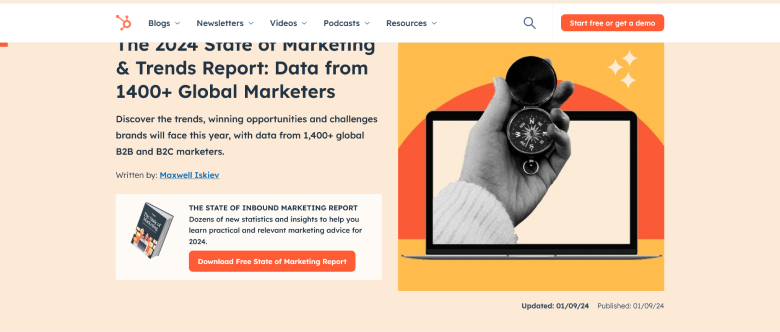
Hubspot offers a “Download Free Guide/Reports,” a more personalized CTA for the right target audience who want to gain insights about marketing. It influences customers to take action and draws their attention.
Mail Chimp
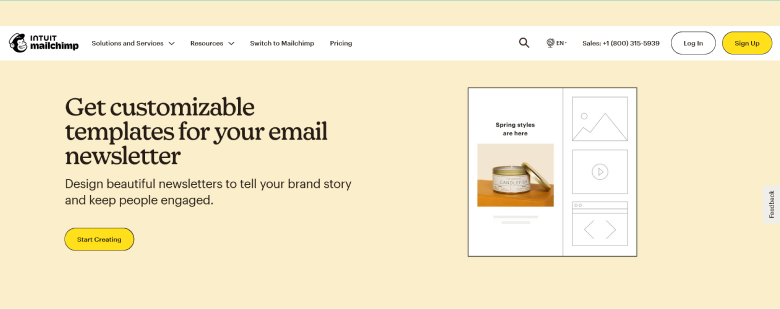
Here’s another call to action example from MailChimp with a personalized CTA “Start Creating” to speak directly with the audiences who are looking to craft email newsletters for them.
The action words influence the audience and increase the click-through rates for the brand.
Blue Apron
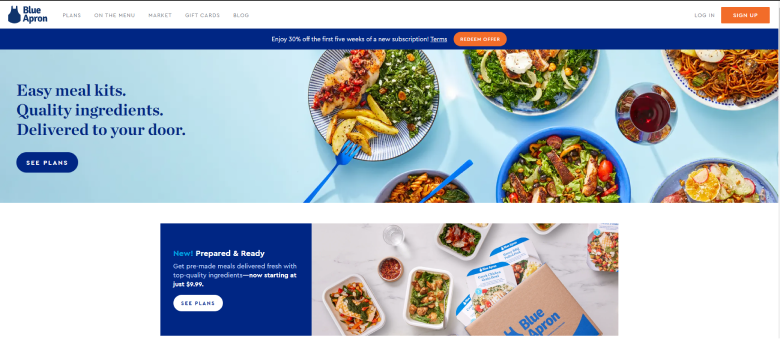
Blue Apron creates excitement for new subscribers by offering them 30% off, and the personalized CTA “Redeem Offer” influences the target audience to grab the offer.
The one CTA button draws the attention of a potential customer.
Bombas
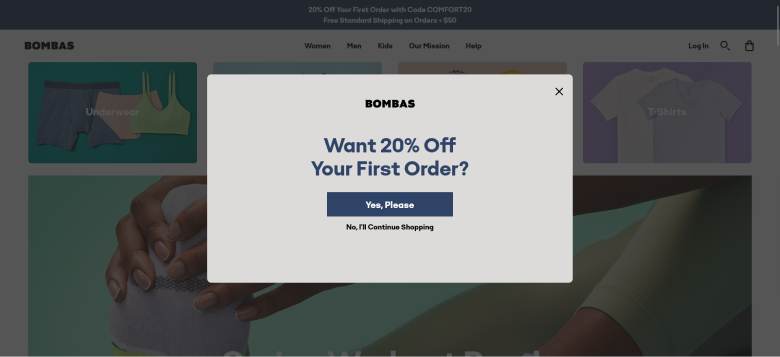
Bombas uses a simple yet effective CTA button design that conveys the right message and evokes emotions to grab the offer without thinking twice.
The call to action button stands out with the simple design and grabs the user’s attention.
These few CTAs stand out with their personalized approach and a clickable button that grabs users’ attention and influences target audiences to take the desired action.
Conclusion
Personalized CTAs are an increasingly important part of marketing campaigns.
By tailoring CTAs to the individual user’s behavior, preferences, and needs, brands can create more effective and engaging CTAs that drive more results, click-through rates, and sales.
We explored different strategies and great examples for the audience. In addition, crafting and optimizing a great call to action can give you better results.
Further, we discussed the importance of understanding personalized CTAs across different channels, including websites, email marketing, social media channels, PPC ads, and other marketing platforms that resonate with them on a deeper level.
Personalized CTAs are a valuable tool for driving more engagement and conversions, and by implementing these tips, you can craft the best call to action that resonates with your target audience, driving more clicks and bringing success to your marketing efforts.
